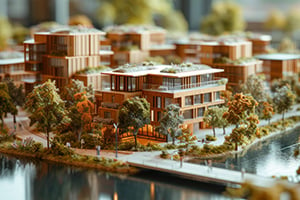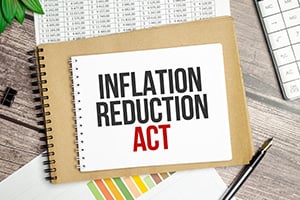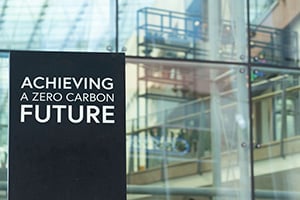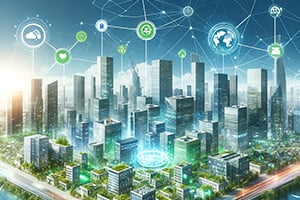By Megan Rosa
Sustainability Analyst
Sustainable Investment Group (SIG)
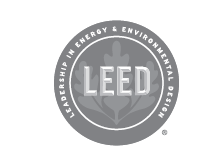 Buildings are responsible for enormous amounts of energy use and carbon dioxide emissions which calls for the demand of more sustainable working and living conditions. In this article, let’s take a look at LEED History and how it has evolved into present day. The most prolific green building rating system in the United States is LEED (Leadership in Energy and Environmental Design) created by the U.S. Green Building Council (USGBC). According to the U.S Office of Federal Environmental Executive, “green building’ is defined as the practices of one, increasing the efficiency of a building or site in their use of energy, water, and materials and two, reducing building impacts on human health and the environment”.¹
Buildings are responsible for enormous amounts of energy use and carbon dioxide emissions which calls for the demand of more sustainable working and living conditions. In this article, let’s take a look at LEED History and how it has evolved into present day. The most prolific green building rating system in the United States is LEED (Leadership in Energy and Environmental Design) created by the U.S. Green Building Council (USGBC). According to the U.S Office of Federal Environmental Executive, “green building’ is defined as the practices of one, increasing the efficiency of a building or site in their use of energy, water, and materials and two, reducing building impacts on human health and the environment”.¹
In the midst of the environmental movement that began in the 1960’s, the 1973 Organization of Petroleum Exporting Countries (OPEC) embargo spiked oil and gas prices leading to an energy crisis. Americans began to question the reliance on fossil fuels for transportation and buildings¹. After several national and international energy, environmental, and building codes conferences and meetings, the green building movement grew.¹
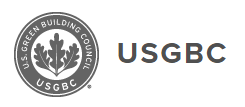 In 1993, inside the American Institute of Architect’s (AIA) boardroom, with representatives from over 60 firms and nonprofits, the USGBC was founded.² The USGBC was organized as a membership-based non-profit to promote the betterment of buildings through sustainable practices in the building and construction industry.³ The pioneers behind the council were David Gottfried, a construction manager and real estate developer, Michael Italiano, an environmental lawyer, and S. Richard (Rick) Fedrizzi the president of Green-Think, a marketing and communications consulting firm. Fedrizzi was named as the founding chair of the U.S Green Building Council and currently holds the title of CEO.¹
In 1993, inside the American Institute of Architect’s (AIA) boardroom, with representatives from over 60 firms and nonprofits, the USGBC was founded.² The USGBC was organized as a membership-based non-profit to promote the betterment of buildings through sustainable practices in the building and construction industry.³ The pioneers behind the council were David Gottfried, a construction manager and real estate developer, Michael Italiano, an environmental lawyer, and S. Richard (Rick) Fedrizzi the president of Green-Think, a marketing and communications consulting firm. Fedrizzi was named as the founding chair of the U.S Green Building Council and currently holds the title of CEO.¹
Though the UK’s BREEAM (Building Research Establishment Environmental Assessment Method) system came out as the world’s first sustainability assessment method for buildings in 1990 (BREEAM)4, USGBC felt they needed their own certification customized for the building industry in the U.S. In 1995, the USGBC partnered with the Natural Resources Defense Council (NRDC), spearheaded by NRDC scientist Rob Watson, to create the LEED green building rating system. The first version of LEED was solidified, adopted by the USGBC, and launched with the help of the Federal Energy Management Program in August of 1998.5
While LEED v1 was a great starting point, Watson found much of the criteria was either too narrow or already standard practice and did not sufficiently measure energy performance. In March 2000, LEED v2 was approved with an expansion from 40 to 69 credits and four certification achievements.¹
The most commonly used version of LEED, LEED v3, was launched in 2007 with the ability to earn up to 110 points.5 The last update for LEED v3 was completed in 2009 (v2009) and has been the current standard of LEED for the past seven years. Though there has been some set back with the release of the newest version, originally designed to launch in 2012, LEED v4 is expected to take effect for all new LEED project registrations in October 2016. Though it is not required yet, there are project teams pursing LEED certification under LEED v4. LEED v4 incorporates technology and government policies and standards that have evolved over the years, as well as stricter requirements for the improvement in carbon reduction and human health.6
Even though there have been different versions throughout the years, the basis of LEED is a point system where building projects are required to fulfill all prerequisites and minimum program requirements, while LEED credits are optional. Project teams must pursue a minimum of 40 LEED points with any combination of credits of their choosing. There are four different certification levels: Certified, Silver, Gold, and Platinum. Although still a part of the USGBC, as of 2008 LEED project certifications are administered through Fedrizzi’s sister organization Green Business Certification, Inc. (GBCI).¹
New buildings, old buildings, homes, public or private buildings, and even entire neighborhoods can pursue LEED each with their own individual rating system that curtail the LEED perquisites and credits to the property type undergoing certification. Projects must fulfill prerequisites and can earn credits in the following categories: location and transportation, sustainable sites, water efficiency, energy and atmosphere, materials and resources, indoor environment and air quality, innovation and regional priority. Projects can also earn extra points through sustainable innovation and exemplary performance. Sustainable Innovation allows project teams to use a new method not specifically addressed in the rating system to fulfill credits, but it must be impactful and measurable. Exemplary performance is where a project can be awarded points for building performance that is above the baseline requirements set by the LEED credit.
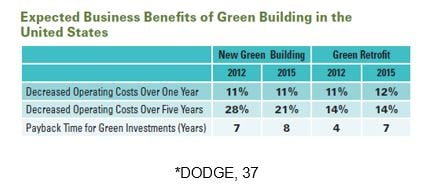 Today the USGBC is headquartered in Washington D.C where its main focus is on educating and advocacy of green building codes and legislation requiring benchmarking and retro commissioning, as well as and transforming the market of the private sector to incentivize green building. In 2014 the USGBC announced that three billion square feet have been LEED certified, with more than 4.3 million people living and working in LEED buildings internationally.7 There are over 79,000 commercial and residential LEED certified projects, with 1.85 million square feet per day being certified.8 By the end of 2016, U.S construction is estimated to be worth up to $248 billion, with LEED projects compromising half of the industry total.7 LEED has transformed the U.S design, construction, operations and maintenance industry, increasing property value, reducing day-to day costs, reducing environmental impacts, and improving human health, and will continue to push the sustainability dial further.
Today the USGBC is headquartered in Washington D.C where its main focus is on educating and advocacy of green building codes and legislation requiring benchmarking and retro commissioning, as well as and transforming the market of the private sector to incentivize green building. In 2014 the USGBC announced that three billion square feet have been LEED certified, with more than 4.3 million people living and working in LEED buildings internationally.7 There are over 79,000 commercial and residential LEED certified projects, with 1.85 million square feet per day being certified.8 By the end of 2016, U.S construction is estimated to be worth up to $248 billion, with LEED projects compromising half of the industry total.7 LEED has transformed the U.S design, construction, operations and maintenance industry, increasing property value, reducing day-to day costs, reducing environmental impacts, and improving human health, and will continue to push the sustainability dial further.
SOURCES
- “White Paper on Sustainability, A Report on the Green Building Movement”. Building Design & Construction (BDC). 2003. July 2016.
- “About USGBC”. US Green Building Council (USGBC). July 2016.
- “Green Building Basic Information”. US Environmental Protection Agency (EPA). 20 Feb. 2016. July 2016.
- “BREEAM at a Glance”. BREEAM. July 2016.
- Fowler, K.M and E.M Rauch. “Sustainable Building Rating Systems Summary”. Pacific Northwest National Laboratory operated for the U.S Department of Energy by Battelle. 2006 July. July 2016.
- Richards, Jennie. “Green Building: A Retrospective on the History of LEED Certification”. Sustainable Industry Sector Retrospectives. Institute for Environmental Entrepreneurship (IEE). 2012. July 2016.
- Kriss, Jacob. “Three Billion Square Feet of Green Building Space LEED-Certified”. USGBC. 8 April 2014. July 2016.
- “USGBC Statistics”. U.S Green Building Council (USGBC). 1 May 2016. July 2016.
- “World Green Building Trends 2016”. DODGE Data & Analytics. July 2016.
© 2016 Sustainable Investment Group (SIG). All Rights Reserved.

